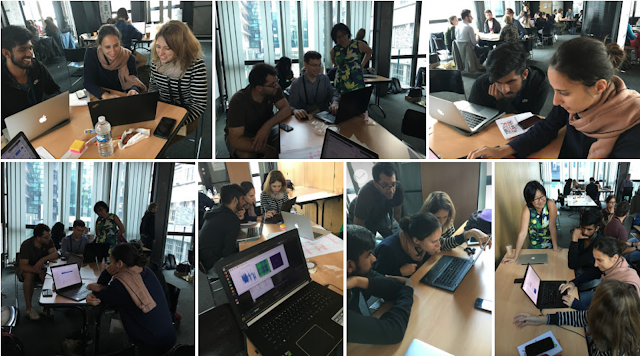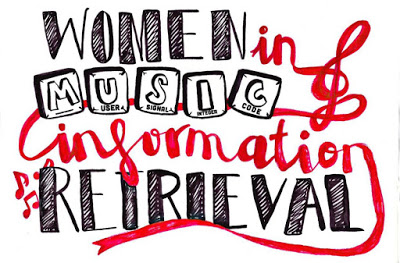Really happy to have had a fantastic team to work with on the project, MIR rhythm analysis techniques for arrhythmia ECG sequences, at the inaugural Women in Music Information Retrieval (WiMIR) workshop—project details reproduced below. [ Photos ] Thank you, Blair Kaneshiro, for the invitation to participate as project guide!

The team members were: Jay Appaji (research intern@Stanford Medical School), Giorgia Cantisani (PhD student@Télécom ParisTech), Magdalena Fuentes (PhD candidate@Télécom ParisTech), Mark Levy (research manager@Apple), Athanasios Lykartsis (research associate@TU Berlin), Chris Tralie (postdoc, Duke University).

In a few short hours, the team had come up with two different directions for exploration—HMM-based beat detection (led by Magdalena Fuentes) and MIR structure visualisation techniques (led by Chris Tralie). Initial and prototype results were presented at the end of the day. Looking forward to continuing the work started on this day.
WiMIR Workshop 2018 Project Guide [ full listing ]
Elaine Chew: MIR Rhythm Analysis Techniques for Arrhythmia ECG Sequences
Cardiac arrhythmia has been credited as the source of the dotted rhythm at the beginning of Beethoven’s “Adieux” Sonata (Op.81a) (Goldberger, Whiting, Howell 2014); the authors have also ascribed Beethoven’s “Cavatina” (Op.130) and another piano sonata (Op.110) to his possible arrhythmia. It is arguably problematic and controversial to diagnose arrhythmia in a long-dead composer through his music. Without making any hypothesis on composers’ cardiac conditions, Chew (2018) linked the rhythms of trigeminy (a ventricular arrhythmia) to the Viennese Waltz and scored atrial fibrillation rhythms to mixed meters, Bach’s Siciliano, and the tango; she also made collaborative compositions (Chew et al. 2017-8) from longer ventricular tachycardia sequences. Given the established links between heart and musical rhythms, in this workshop, we shall take the pragmatic and prosaic approach of applying a wide variety of MIR rhythm analysis techniques to ECG recordings of cardiac arrhythmias, exploring the limits of what is currently possible.
References
Chew, E. (2018). Notating Disfluencies and Temporal Deviations in Music and Arrhythmia. Music and Science. [ html | pdf ]
Chew, E., A. Krishna, D. Soberanes, M. Ybarra, M. Orini, P. Lambiase (2017-8). Arrhythmia Suite—bit.ly/heart-music-recordings
Goldberger, Z. D., S. M. Whiting, J. D. Howell (2014). The Heartfelt Music of Ludwig van Beethoven. Perspectives in Biology and Medicine, 57(2): 285-294. [synopsis]




